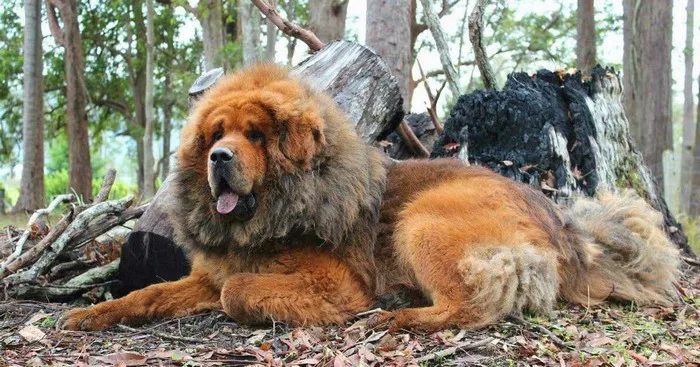The Tibetan Mastiff, with its majestic appearance and ancient lineage, has captured the fascination of dog lovers around the world. Known for its imposing size, thick fur, and loyal nature, this breed has gained popularity not only as a guardian of livestock in its native Tibet but also as a beloved companion in many households. However, for those residing in the Philippines, the question arises: Is the Tibetan Mastiff allowed in the Philippines?
In this comprehensive guide, we will delve into the history and characteristics of the Tibetan Mastiff, explore the regulations and restrictions regarding pet ownership in the Philippines, and provide insights into the process of importing and owning this remarkable breed in the archipelago.
Understanding the Tibetan Mastiff
Before delving into the legal aspects of owning a Tibetan Mastiff in the Philippines, it’s essential to understand the breed itself. The Tibetan Mastiff is an ancient breed believed to have originated in the Himalayan region of Tibet, Nepal, India, and China. Revered for its strength, courage, and protective instincts, the Tibetan Mastiff was traditionally used by nomadic cultures to guard livestock, monasteries, and homes from predators and intruders.
Physically, the Tibetan Mastiff is an imposing and muscular dog with a thick double coat that provides insulation against the harsh mountain climates. They typically have a large head, broad chest, and a bushy tail that curls over their back. Despite their size and formidable appearance, Tibetan Mastiffs are known for their calm demeanor and unwavering loyalty to their family members.
Legal Considerations in the Philippines
The Philippines, like many other countries, has regulations governing the importation and ownership of certain dog breeds. These regulations are in place to ensure public safety, prevent the spread of diseases, and protect the welfare of animals. While the Philippines does not have a specific ban on Tibetan Mastiffs, there are general requirements and restrictions that apply to all dog breeds imported into the country.
Importation Regulations
To import a dog, including a Tibetan Mastiff, into the Philippines, certain requirements must be met. These typically include:
Rabies Vaccination: The dog must be vaccinated against rabies at least 30 days before arrival but not more than 12 months prior to travel. The vaccination must be administered by a licensed veterinarian using an approved vaccine.
Health Certificate: A health certificate issued by an accredited veterinarian in the country of origin is required. This certificate should attest that the dog is free from contagious diseases and fit for travel.
Microchipping: The dog must be microchipped with an ISO 11784/11785 compliant 15-digit pet microchip. The microchip should be implanted before the rabies vaccination and must be readable by an ISO compliant scanner.
Import Permit: Depending on the country of origin, an import permit may be required from the Bureau of Animal Industry (BAI) in the Philippines. The import permit application process typically involves submitting various documents, including the health certificate and proof of rabies vaccination.
Quarantine Requirements: Upon arrival in the Philippines, dogs may be subject to quarantine or inspection by the BAI to ensure compliance with importation regulations.
Breed-Specific Restrictions
While the Philippines does not have a specific ban on Tibetan Mastiffs, it’s essential to note that some municipalities or homeowners’ associations may have their own regulations regarding dog breeds and sizes allowed within their jurisdiction. Additionally, certain breeds, such as those categorized as “dangerous” or “potentially dangerous,” may be subject to stricter regulations or even bans in some areas.
Process of Importation and Ownership
Importing a Tibetan Mastiff into the Philippines involves careful planning and adherence to the country’s importation regulations. Here is an overview of the process:
Research and Preparation: Before importing a Tibetan Mastiff, it’s crucial to research and familiarize yourself with the importation requirements of the Philippines. This includes understanding the vaccination, microchipping, and documentation requirements.
Select a Reputable Breeder: Choose a reputable breeder with experience in breeding Tibetan Mastiffs and a track record of producing healthy, well-socialized puppies. Ensure that the breeder complies with all relevant health and welfare standards.
See Also:What Color of Tibetan Mastiff Is Rare?
Health Check-Up and Vaccinations: Before travel, schedule a thorough health check-up for the dog with a licensed veterinarian. Ensure that the dog is up-to-date on all vaccinations, including rabies, and obtain a health certificate from the veterinarian.
Microchipping: Have the dog microchipped with an ISO compliant microchip before vaccination. Ensure that the microchip is registered with your contact information.
Apply for an Import Permit: If required, apply for an import permit from the Bureau of Animal Industry in the Philippines. Follow the application process and submit all required documents, including the health certificate and proof of rabies vaccination.
Travel Arrangements: Make travel arrangements for the dog, taking into account any quarantine or inspection requirements upon arrival in the Philippines. Choose a reputable airline with experience in transporting pets and ensure that the dog travels in a suitable carrier with adequate ventilation and space.
Arrival and Quarantine: Upon arrival in the Philippines, the dog may be subject to quarantine or inspection by the Bureau of Animal Industry. Provide all required documentation and cooperate with the authorities to ensure a smooth entry process.
Settling In: Once the dog has cleared quarantine, take the necessary steps to acclimate it to its new environment. Provide a comfortable and secure living space, establish a routine for feeding and exercise, and begin socializing the dog with family members and other pets.
Conclusion
In conclusion, while there is no specific ban on Tibetan Mastiffs in the Philippines, importing and owning one requires adherence to the country’s importation regulations and general pet ownership requirements. By understanding the process of importation, selecting a reputable breeder, and ensuring compliance with health and welfare standards, dog lovers in the Philippines can enjoy the companionship of this magnificent breed while promoting responsible pet ownership and animal welfare.
Related Topics:
Tibetan Mastiff vs German Shepherd: Which Is Stronger?
What Are the Characteristics of a Tibetan Mastiff?
10 Breeding Challenges of Tibetan Mastiffs


























